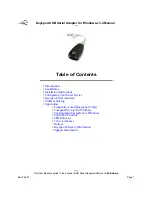
MIB Descriptions
C-10
7110-A2-GB20-00
June 1997
Interface Stack Group
The Interface Stack Group is used by the unit to show the relationship between a
logical interface and a physical interface. The following table provides clarification
for objects contained in the Interface Stack group when it is not clear how the
object definition in RFC 1573 is supported by the unit.
Table C-4.
Interface Stack Group Objects
Object, OID, Access
Description
Setting/Contents
ifStackHigherLayer
(ifStackEntry1)
1.3.6.1.2.1.31.1.2.1.1
read-only
Provides the index that
corresponds to the higher
sublevel specified by
ifStackLowerLayer.
When the FDL in-band
management channel is enabled,
this object for the network T1
interface is set to the ifIndex of
the FDL. All other
ifStackHigherLayer objects will
have a value of zero.
ifStackLowerLayer
(ifStackEntry2)
1.3.6.1.2.1.31.1.2.1.2
read-only
Provides the index that
corresponds to the lower
sublevel specified by
ifStackHigherLayer.
When the FDL in-band
management channel is enabled,
this object (for the FDL) is set to
the ifIndex of the network T1
interface. All other
ifStackLowerLayer objects will
have a value of zero.
ifStackStatus
(ifStackEntry3)
1.3.6.1.2.1.31.1.2.1.3
read-only
Specifies the stack group’s
status compared to the
interface’s ifOperStatus.
When ifStackStatus set to
active – maps to ifOperStatus
set to up(1) or testing(3).
When ifStackStatus set to not
in service – maps to
ifOperStatus set to down(2).
Interface Test Table
Not supported by the unit.
Generic Receive Address Table
Not supported by the unit.
















































